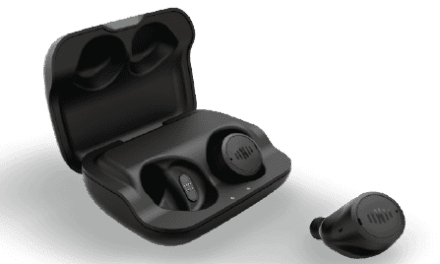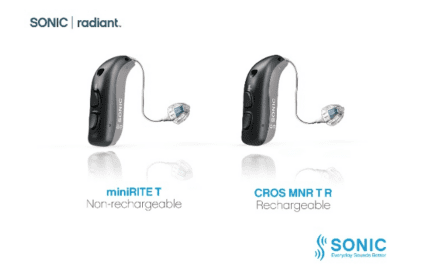Summary: A new clinical trial from Neosensory demonstrated that the company’s Clarify wristband significantly improved speech comprehension in individuals with high-frequency hearing loss.
Takeaways:
- The Clarify wristband translates high-frequency sounds into vibrations on the wrist, allowing users to better understand spoken words through sensory substitution.
- The wristband proved beneficial for all participants, particularly those not already using hearing aids, suggesting it could serve as an effective standalone solution or a complementary aid for those with existing devices.
- The study observed a significant improvement in participants’ speech comprehension, as evidenced by an average improvement of 12.4 points in the Abbreviated Profile of Hearing Aid Benefit (APHAB) scores.
Neosensory published a clinical trial showcasing the efficacy of the Clarify wristband in improving speech comprehension in people with high-frequency hearing loss.
The study, coordinated by Stanford University neuroscientist David Eagleman, PhD, represents a major advancement in assistive hearing technologies.
Addressing High-Frequency Hearing Loss
The study enrolled participants with high-frequency hearing loss, which gave them trouble understanding the words of others. Over six weeks, the participants wore the Clarify wristband during the day. The wristband contains several vibratory motors and employs machine learning to translate high-frequency phonemes into spatially unique vibrations felt by the user on the wrist. This approach allows users to perceive these phonemes as distinct touch sensations, enhancing their ability to understand speech.
Key findings of the Clarify wristband study include:
- The study observed a significant improvement in participants’ speech comprehension, as evidenced by an average improvement of 12.4 points in the Abbreviated Profile of Hearing Aid Benefit (APHAB) scores.
- The Clarify wristband demonstrated substantial benefits in various challenging auditory environments, including settings with background noise and reverberation.
- Participants who wore the wristband without hearing aids showed the greatest improvement. Those who already wore hearing aids showed improvement over the improvement they already had.
“The results from this study are significant, because they represent a meaningful change in the daily experiences of people with high-frequency hearing loss,” says Eagleman, a co-author of the study. “The wristband is a novel and effective solution for those who struggle with speech comprehension, a challenge that has long been a barrier to effective communication and quality of life.”
Izzy Kohler, Lead Scientist at Neosensory, added, “This study is a testament to the potential of sensory substitution technology. We are thrilled to see such positive outcomes and provide a convenient, accessible solution for millions of people currently living with untreated hearing loss.”
Further reading: Neosensory Hearing Tech Approved for Veterans Affairs Clinics
Neosensory’s Clarify wristband
Neosensory’s Clarify wristband is part of the company’s broader mission to harness cutting-edge technology to address sensory health challenges. Earlier, Neosensory had introduced Duo, a wearable device for tinnitus relief boasting 91% effectiveness in clinical trials published in the International Tinnitus Journal (2023).
Featured image: Figure 1: Six week progression of the Abbreviated Profile of Hearing Aid Benefit (APHAB) scores for participants who were not users of hearing aids. Photo: Neosensory





